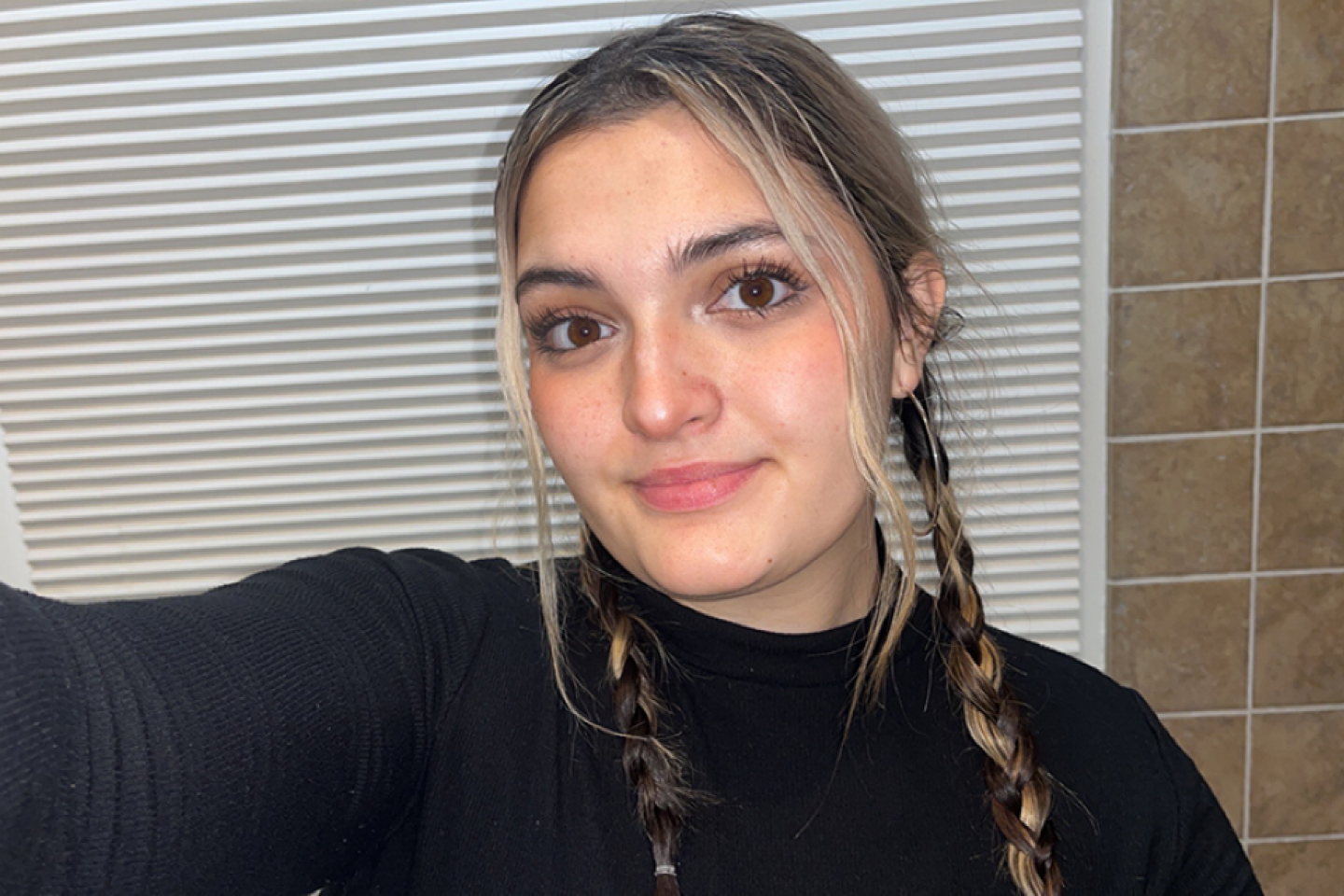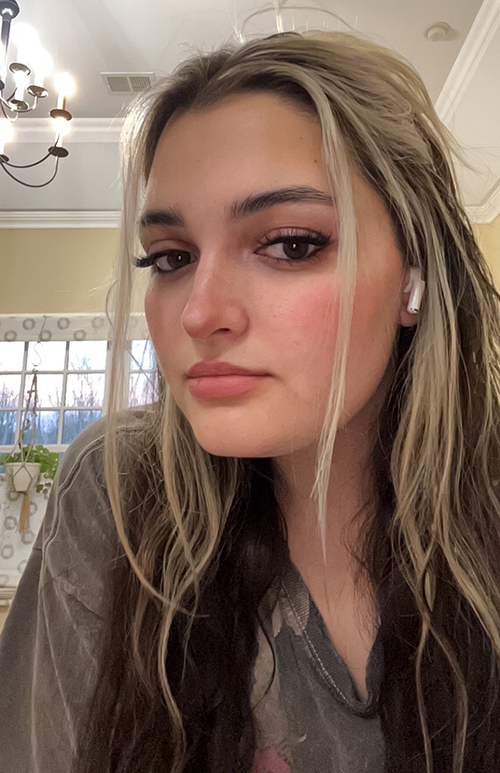
This patient story was originally published by Weill Cornell Medicine's Department of Neurological Surgery.
It was the best 18th birthday present Sabrina Garguilo could have asked for. The New Jersey teen celebrated her big day by walking out the doors of NewYork-Presbyterian/Weill Cornell Medical Center, finally free from debilitating headaches. The pain had placed her life on hold, becoming unbearable during her senior year of high school, and the cause of the headaches had confounded doctors and specialists alike, for years. Sabrina was more than ready to return to school, where she was helping manage her high school’s spring musical, Cabaret.
“I had had headaches since I was in the seventh grade,” says Sabrina. “But things got worse my senior year. Tylenol and ibuprofen stopped helping. I started experiencing nausea and dizziness, which made everything I had to do more difficult: applying to colleges, hanging out with friends, and making sure my grades stayed afloat.”
Sabrina says some days she had bad headaches, and other days she had really bad headaches. “When those happened, the pain was a level 10 out of 10,” she says. “It felt as if someone had bashed my head against concrete.” After multiple episodes, Sabrina’s mother, AnneMarie, took her to a neurologist, who ordered an MRI, which revealed a cyst. The specialist downplayed the cyst and said it was not the cause of the headaches.
“Sabrina had a Rathke cleft cyst — a fluid-filled mass that forms in a small space at the base of the brain,” says Dr. Theodore Schwartz, a Weill Cornell Medicine neurosurgeon who specializes in lesions of the skull base. “The current ideology among neurologists is that removing the cyst doesn’t help relieve headaches. That can lead to detours in the search for treatment, as Sabrina experienced.”
Most Rathke cleft cysts are discovered on a scan done to find the source of a headache. “You would think, ‘Problem solved — there’s the abnormality, that has to be it,’” says Dr. Schwartz. Not everyone agrees, however. (Dr. Schwartz and his team recently published a paper, “Durable headache relief following endoscopic endonasal resection of sub-centimeter Rathke cleft cysts in medically refractory patients,” showing that endoscopic draining of the cyst provides lasting relief for patients with intractable headaches.)

“The neurologist was adamant that the cyst wasn’t causing Sabrina’s headaches,” recalls AnneMarie. “They prescribed a pill regimen to get ahead of the pain: ibuprofen every four hours with Tylenol every two hours. Add in 100 ounces of water with 60 ounces of electrolytes daily. And when her headaches got worse, they prescribed amitriptyline, which is typically used to treat migraines and tension headaches. But the headaches kept coming. We were told that she hadn’t been taking the medication long enough — that she should stick with it until she was up to the prescribed dose. But another bad ‘10 out of 10’ headache brought us back to the ER. The migraine cocktail they gave her reacted strongly with the amitriptyline, and it resulted in a really bad experience for Sabrina.”
“I didn’t like how this stuff was making me feel,” says Sabrina. “I just didn’t want to take it anymore. I’d read that amitriptyline was a difficult drug to taper off of if you’re taking it for a while. They suggested I take steroids, which I’d already tried back in October. The doctors I talked to were all dismissive, until we talked to Dr. Georgiana Dobri, a neuroendocrinologist at Weill Cornell Medicine. She had us do bloodwork, which showed a high prolactin level. I’d had those results before, but until that point no one had found that concerning. Thankfully, Dr. Dobri did, and that’s when she set up a meeting with Dr. Schwartz.”
Dr. Dobri and Dr. Schwartz work as a team caring for patients with problems of the neuroendocrine system. The Pituitary and Neuroendocrine Program provides integrated, comprehensive care for patients with disorders of the pituitary and gland, which is what Dr. Dobri recognized when she saw the blood test results.
“Elevated prolactin is a symptom that something’s not right,” says Dr. Schwartz. “Sabrina’s cyst was small, and many doctors believed that its size disqualified it from causing her headaches. But this is my specialty. I’ve seen cysts bigger and smaller than hers, and what they all have in common is that as they grow, they compress the pituitary stalk and cause the elevated prolactin. I’d seen it before and recently wrote a paper that shows that treating the cyst treats the headaches. So while her doctors sought to manage the symptoms, we sought to treat the problem at its root.”
“In that meeting, Dr. Schwartz was the only one who paid attention to my symptoms and wasn’t just looking at the size of the cyst,” recalls Sabrina. Her mother agreed. “These headaches were destroying her mentally and physically. When he said, ‘I think I can help you,’ just the possibility of it made me cry. It was a miracle.”
Sabrina felt hopeful after her meeting with Dr. Schwartz, but she had already scheduled a meeting with a renowned neurosurgeon at a well-known hospital three days later. “I treated it as a second opinion,” she says. “But when we got there, the doctor immediately expressed his doubts — that the cyst was too small to cause problems. He didn’t ask any questions. We hadn’t submitted any tests in advance. We were talking and he wasn’t paying any attention at all. He just said the surgery was a bad idea and brought up stronger medications I could take.”
Sabrina and her family carefully weighed how to move forward: have the surgery with Dr. Schwartz, or continue trying new medications? Sabrina did her own research. “I looked at symptoms for Rathke cleft cyst and it matched all the symptoms I had,” she says. “I looked at my quality of life. I could barely hang with my friends anymore, I’d wake up with a headache that wouldn’t go away, and I was taking medications that made me feel terrible. I was leaning toward surgery, but I thought, ‘What if this is a mistake?’ I turned to my cousin, who had actually had surgery for Chiari at Weill Cornell. She had renowned surgeons telling her not to go through with it, but she did. Her experience showed me that doctors could have such varied opinions and still be wrong about how to proceed.”
Two weeks later, Sabrina and her family were checking in at the Helmsley Medical Tower next to NewYork-Presbyterian/Weill Cornell Medical Center. “I had packed a bunch of stuff to do after the surgery, but I didn’t use any of it,” Sabrina laughs. “Everything felt so organized when I was getting ready for surgery. I remember Allison taking me to get an MRI done so Dr. Schwartz could have a brain map for the surgery. Soon I was on the operating table and I started tearing up. I thought, ‘I can’t do this,’ even though I was literally doing nothing. My parents were with me and, through the oxygen mask, I said ‘I love you guys.’ I heard them say ‘I love you’ back, and that was the last thing I remembered before the anesthesia hit.”
“Surgery for Rathke cleft cyst can be done using a minimally invasive approach,” says Dr. Schwartz. “We don’t open up the skull or do anything destructive to access the cyst. We started by threading a specialized endoscope up Sabrina’s nasal cavities and routing it towards the cyst. From there, the tools on the endoscope allowed us to drain the cyst and relieve the compression in the pituitary stalk area. As you can imagine, zero incisions or disfigurements means the patient benefits from a faster recovery time, which meant Sabrina could celebrate her birthday by going home instead of being confined to a hospital bed. Most importantly this would give her ample time to recover to help manage the March debut of her final high school play.”
“It was like I was out for 30 seconds,” recalls Sabrina. “I wasn’t even in pain from the surgery; it was more nausea than anything. The day I was set to be released, Dr. Schwartz came by and asked how the headaches were. I was happy to say they were gone. I feel great, and my symptoms are feeling better. I still have dizziness and congestion, but with each passing day my nose gets more cleared up. I’m able to walk more. I’m getting up all by myself. I feel reborn. And you can literally tell each day that I get better. I’m so grateful.”
Just a week after her surgery, Sabrina was raring to go back to school and get back into the swing of things: college applications, hanging out with her friends, and assisting with Cabaret.
Sabrina has advice for anyone who feels unheard. “Trust yourself,” she says. “You know yourself and your symptoms better than anyone else. You can explain to others as much as you can, but if you know, you know. Even with the medicine I was taking, I had a feeling I shouldn’t have been taking it — it did nothing for me. You just have to trust yourself and you have to have hope. Believe that things will get better.”